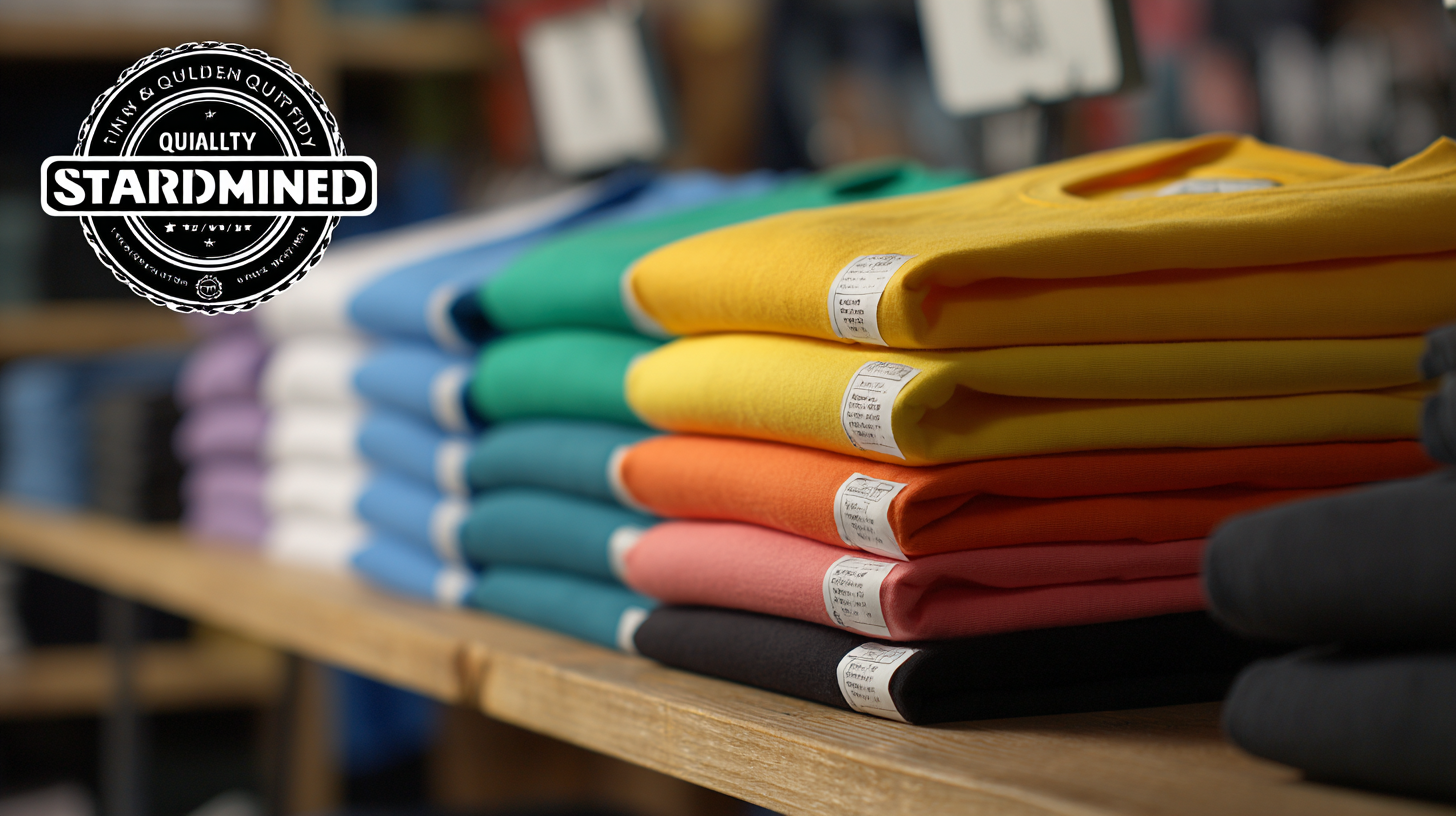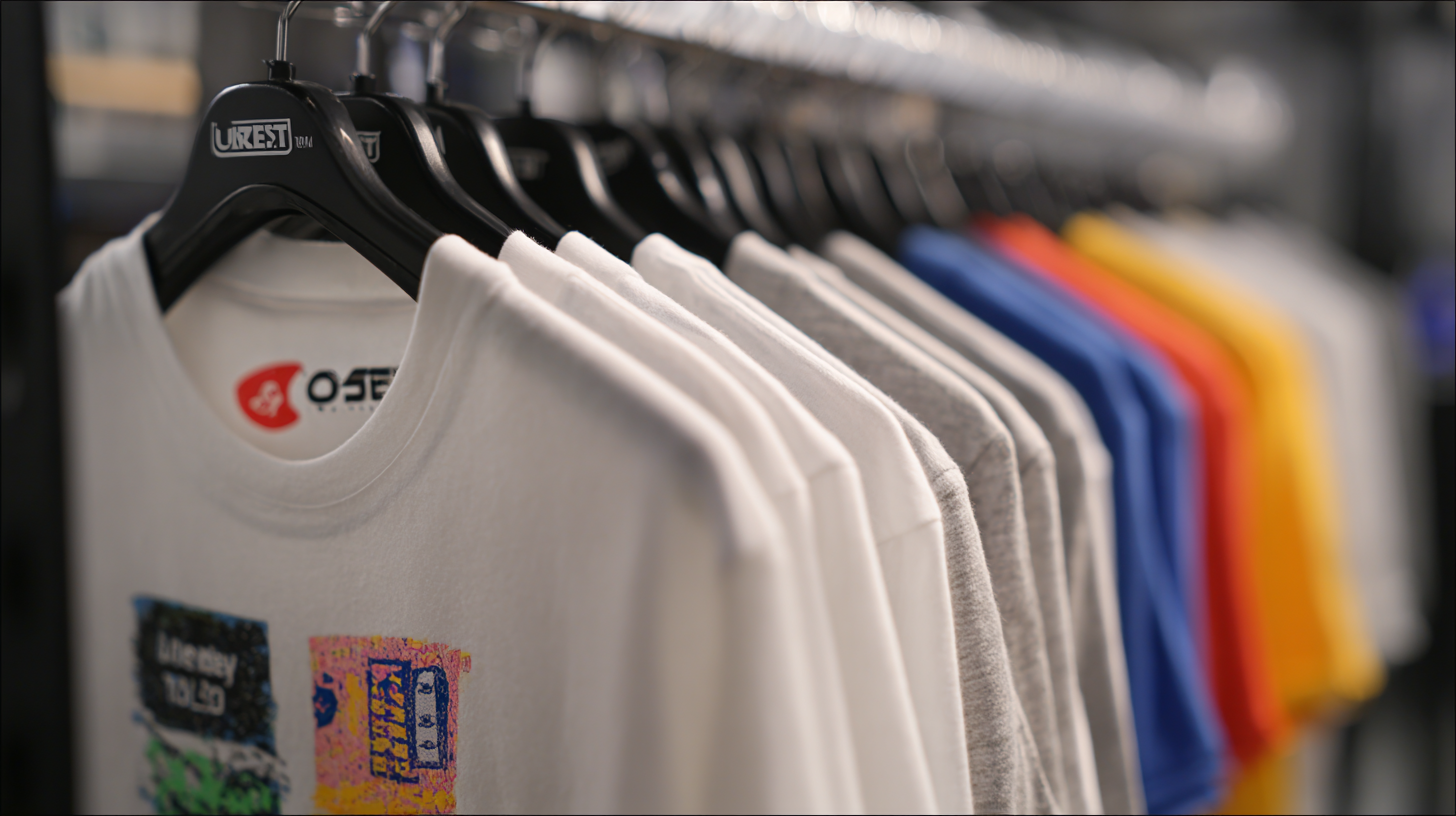 In the competitive landscape of custom apparel, the significance of
quality in the
"Printer On Shirts" industry cannot be overstated.
According to a recent report by Smithers Pira, the global market for textile printing
is anticipated to reach $6.2 billion by 2025, highlighting the increasing demand
for high-quality printed garments. This surge emphasizes
the necessity for buyers to identify industry standards that ensure both durability and
vibrancy in print. From digital techniques to eco-friendly inks, the evolution of
printing technology requires buyers to remain informed about essential criteria for selecting printers
that not only meet aesthetic expectations but also align with sustainability goals.
As global buyers increasingly prioritize quality over cost, understanding the benchmarks that define
the best printers is essential for making informed decisions that will impact their
brand’s reputation and
customer satisfaction.
In the competitive landscape of custom apparel, the significance of
quality in the
"Printer On Shirts" industry cannot be overstated.
According to a recent report by Smithers Pira, the global market for textile printing
is anticipated to reach $6.2 billion by 2025, highlighting the increasing demand
for high-quality printed garments. This surge emphasizes
the necessity for buyers to identify industry standards that ensure both durability and
vibrancy in print. From digital techniques to eco-friendly inks, the evolution of
printing technology requires buyers to remain informed about essential criteria for selecting printers
that not only meet aesthetic expectations but also align with sustainability goals.
As global buyers increasingly prioritize quality over cost, understanding the benchmarks that define
the best printers is essential for making informed decisions that will impact their
brand’s reputation and
customer satisfaction.
Identifying high-quality shirt printing standards is increasingly challenging for global buyers due to varying benchmarks across industries and regions. According to a report by Smithers Pira, the worldwide digital textile printing market is projected to reach $3.5 billion by 2025, which indicates a rapid expansion in the sector. However, this growth comes with discrepancies in quality assurance practices and standards among different manufacturers. For instance, some producers may prioritize speed over quality, resulting in inconsistencies that can frustrate customers looking for reliable, long-lasting prints.
Moreover, the challenges are amplified by the complexity of new printing technologies. A study from the Textile Institute highlighted that while direct-to-garment (DTG) printing has become more popular, it often requires manually calibrated machines and trained personnel to maintain quality standards. Inadequate training and insufficient knowledge about best practices can lead to critical quality issues. Therefore, global buyers must navigate this labyrinth of standards and potential pitfalls while aiming for high-quality products. Understanding the specific requirements, such as industry certifications like OEKO-TEX and GOTS, can provide valuable frameworks to ensure that the shirts produced meet both aesthetic and durability expectations.
| Standard | Description | Importance for Buyers | Challenges in Implementation |
|---|---|---|---|
| ISO 9001 | Quality management systems to ensure consistent quality. | Enhances customer satisfaction by meeting quality requirements. | Cost of training and documentation. |
| OEKO-TEX Standard 100 | Certification for textiles free from harmful substances. | Ensures safety and environmental compliance. | Complexity of testing and certification process. |
| GOTS | Global Organic Textile Standard for organic fibers. | Promotes sustainable practices and organic materials. | Difficulty in sourcing certified organic materials. |
| ANSI/ASQC Q9001 | National standard for quality management systems. | Aligns international and national quality processes. | Maintaining compliance with evolving standards. |
| BS 5609 | Standard for the durability of printed labels in harsh conditions. | Crucial for brand recognition and product transparency. | High testing costs and technical expertise required. |
| REACH | Regulation on the production and use of chemical substances. | Ensures safety in chemical usage in manufacturing. | Interpretation and adherence to complex regulations. |
| FSC Certification | Sustainable forestry management certification. | Promotes responsible forest management practices. | Investment in sustainable sourcing and compliance checks. |
In the global marketplace, compliance with international printing regulations is crucial for businesses seeking to produce high-quality shirts. Understanding these standards not only ensures product quality but also enhances trust and credibility among consumers. Printers must navigate various regulations that govern safety, environmental concerns, and textile labeling. For instance, adherence to the Oeko-Tex Standard 100, which certifies that textiles are free from harmful substances, is essential for brands aiming to attract eco-conscious customers.
Moreover, compliance with regulations like the EU's REACH (Registration, Evaluation, Authorisation, and Restriction of Chemicals) is critical, as it mandates the safe use of chemicals in production processes. By aligning with these international standards, printers can mitigate risks associated with non-compliance, such as potential legal issues and product recalls. Consequently, global buyers should prioritize working with printers that demonstrate a commitment to adhering to these regulations, ensuring that their products not only meet quality expectations but also align with ethical and sustainable practices.
In the competitive shirt printing industry, maintaining high-quality standards is crucial to meet global buyers' expectations. Common quality control issues such as inconsistent print quality, improper ink adhesion, and misalignment during the printing process can significantly affect the final product. To address these challenges, industry leaders are increasingly adopting advanced technology, such as machine learning and inline quality control systems. By leveraging these innovations, printers can predict and rectify potential quality issues in real-time, ensuring a consistent output that meets or exceeds established standards.
Moreover, the implementation of rigorous industry standards can help streamline operations and reduce the occurrence of defects. For instance, adopting standardized quality metrics allows printers to evaluate their processes more effectively and identify areas for improvement. When businesses commit to these standards, they not only enhance their product quality but also build trust and reliability with buyers around the world. Emphasizing quality control in every stage of production is essential for shirt printers looking to thrive in the global marketplace.
In the realm of shirt printing, evaluating printer technologies hinges on achieving an optimal balance between quality and cost. Industry studies indicate that digital printing has transformed shirt manufacturing by enabling intricate designs while maintaining cost-effectiveness. For instance, according to a 2022 Smithers report, the digital textile printing market is projected to grow to $5 billion by 2024, highlighting the increasing adoption of technologies that provide high-resolution prints and environmentally friendly options. However, while initial investments are significant, the long-term savings from reduced waste and faster turnaround times can substantially outweigh these costs.
When selecting the best printers for shirts, keep in mind these tips: first, assess the printer's resolution and color capacity to ensure it aligns with your design needs. A printer with a higher dots per inch (DPI) can produce vivid colors and detailed graphics. Secondly, consider the durability of the printed fabric. Research indicates that inks with high resistance to washing and fading reduce the need for frequent reprints, ultimately saving money over time. Lastly, factor in maintenance costs—choosing a printer with accessible support and spare parts can prevent unexpected expenses and downtime. Balancing these elements is crucial to make an informed decision that meets both quality standards and budget constraints.

When selecting the best printers for shirts, understanding material compatibility is crucial for achieving optimal print results. The choice of inks, fabrics, and printing technologies can dramatically influence not just the quality of the final product, but also its durability and appeal. For global buyers seeking top-notch printing solutions, familiarity with the various materials available—such as cotton, polyester, and blends—ensures that the printed designs remain vibrant and intact throughout the garment's life cycle.

Recent advancements in printing technology, such as those seen in the latest 3D printing developments, illustrate the importance of harnessing material properties effectively. Utilizing specialized inks that bond well with specific fabric types can enhance color adhesion and resist fading. Moreover, understanding the complexities of different printing materials helps in addressing potential processing challenges, leading to a smoother production workflow.
As the market evolves, ensuring that material compatibility is prioritized will be essential for brands aiming to deliver high-quality printed apparel that meets the diverse demands of their customers.
